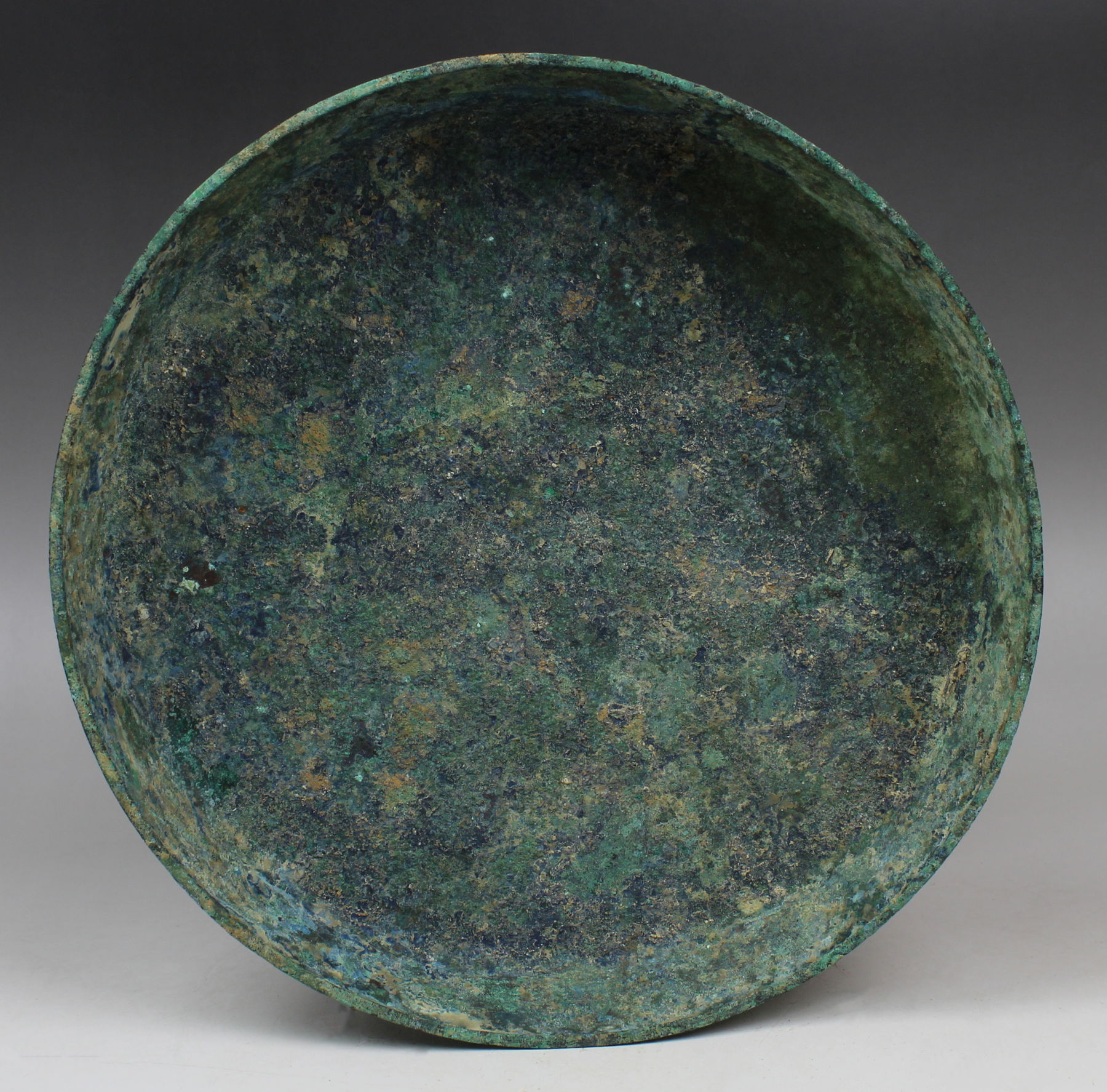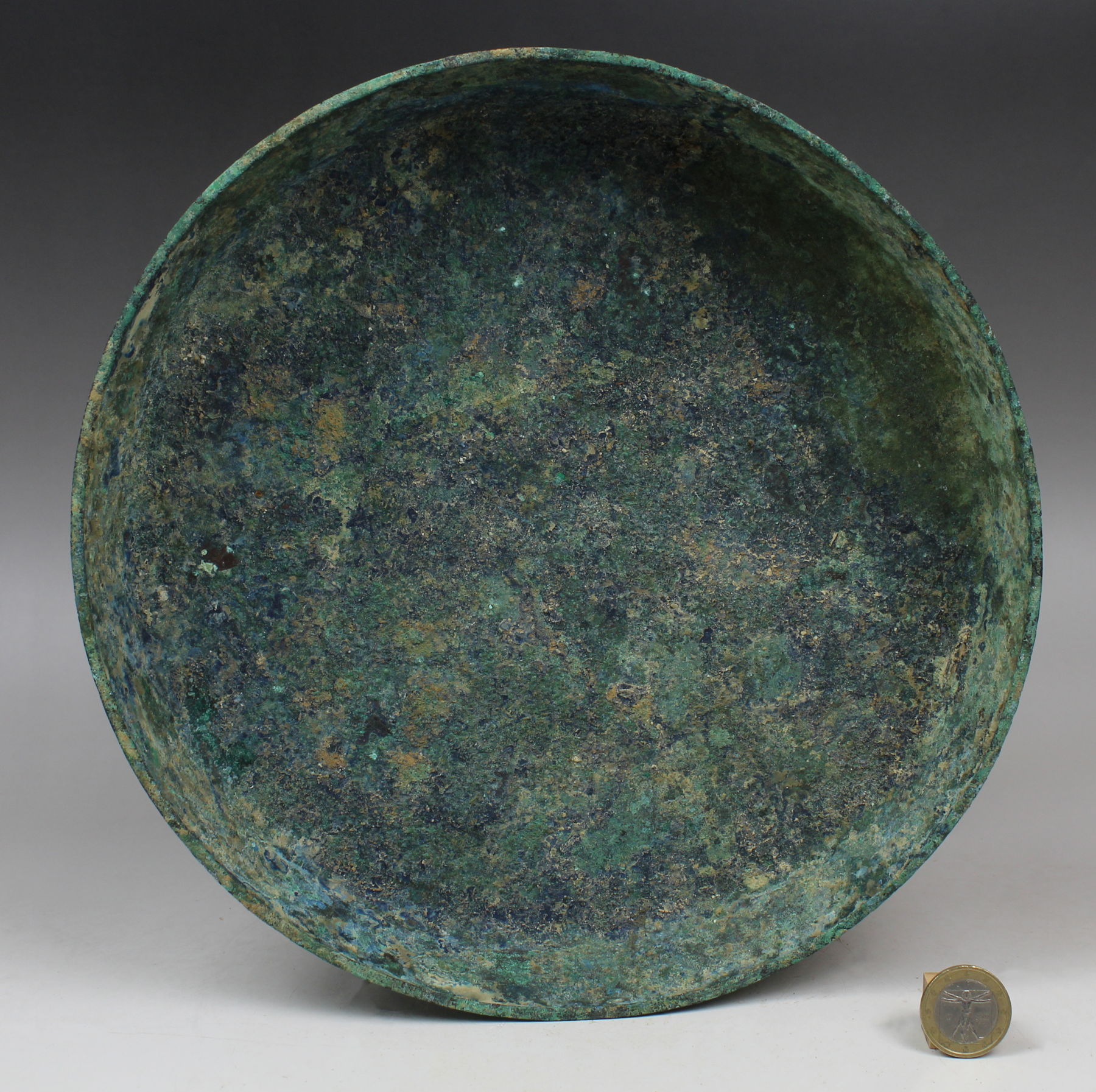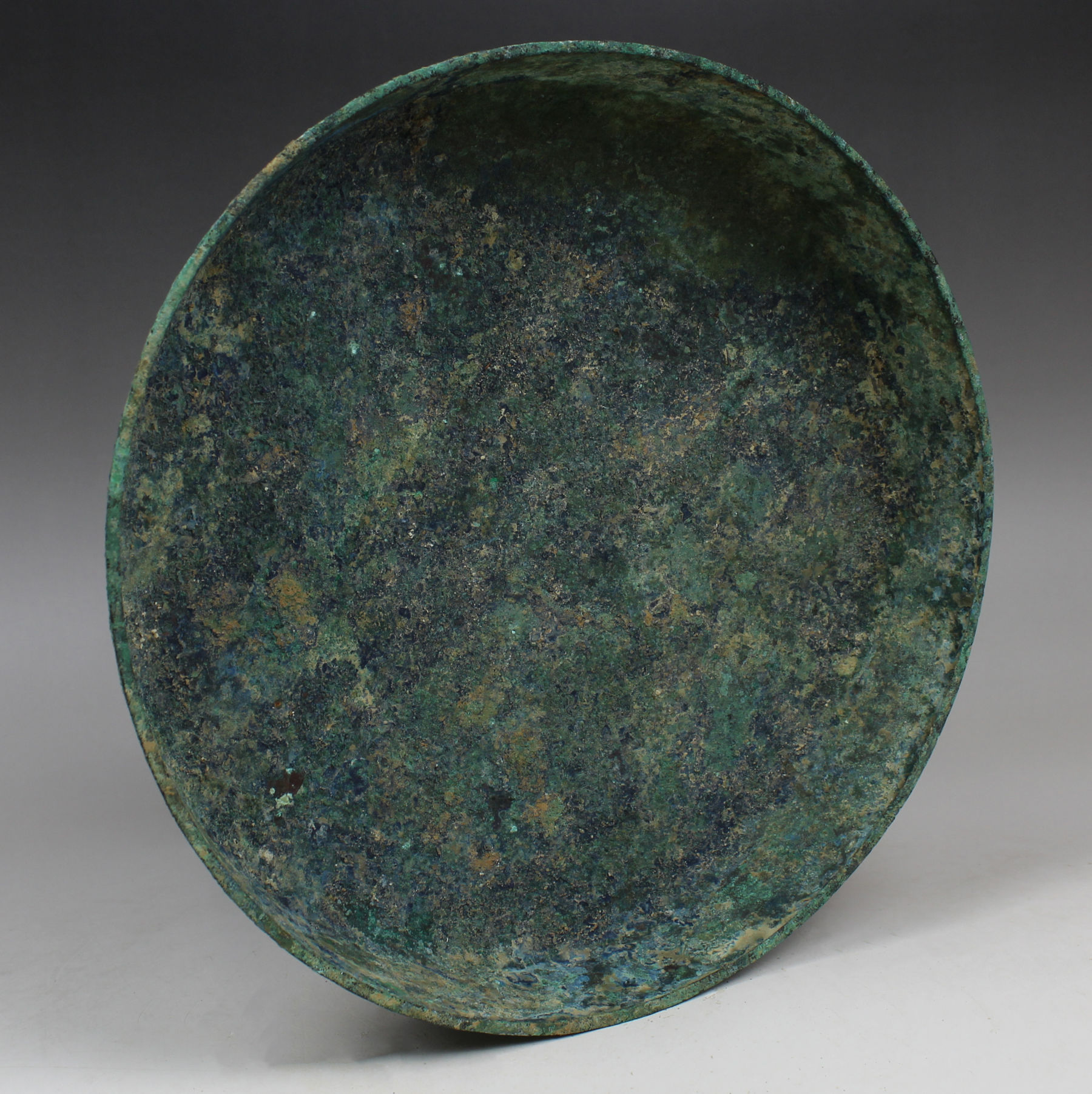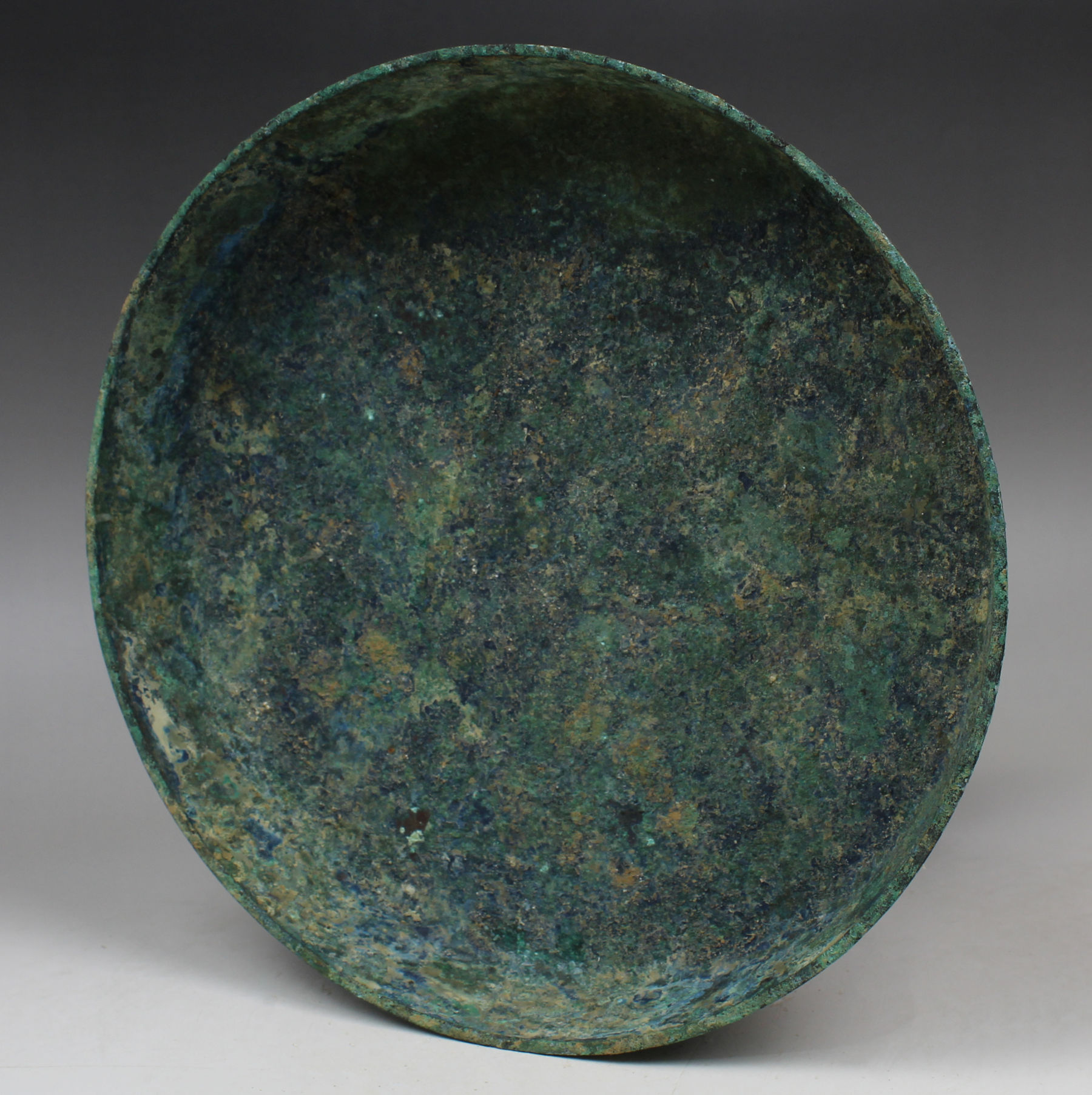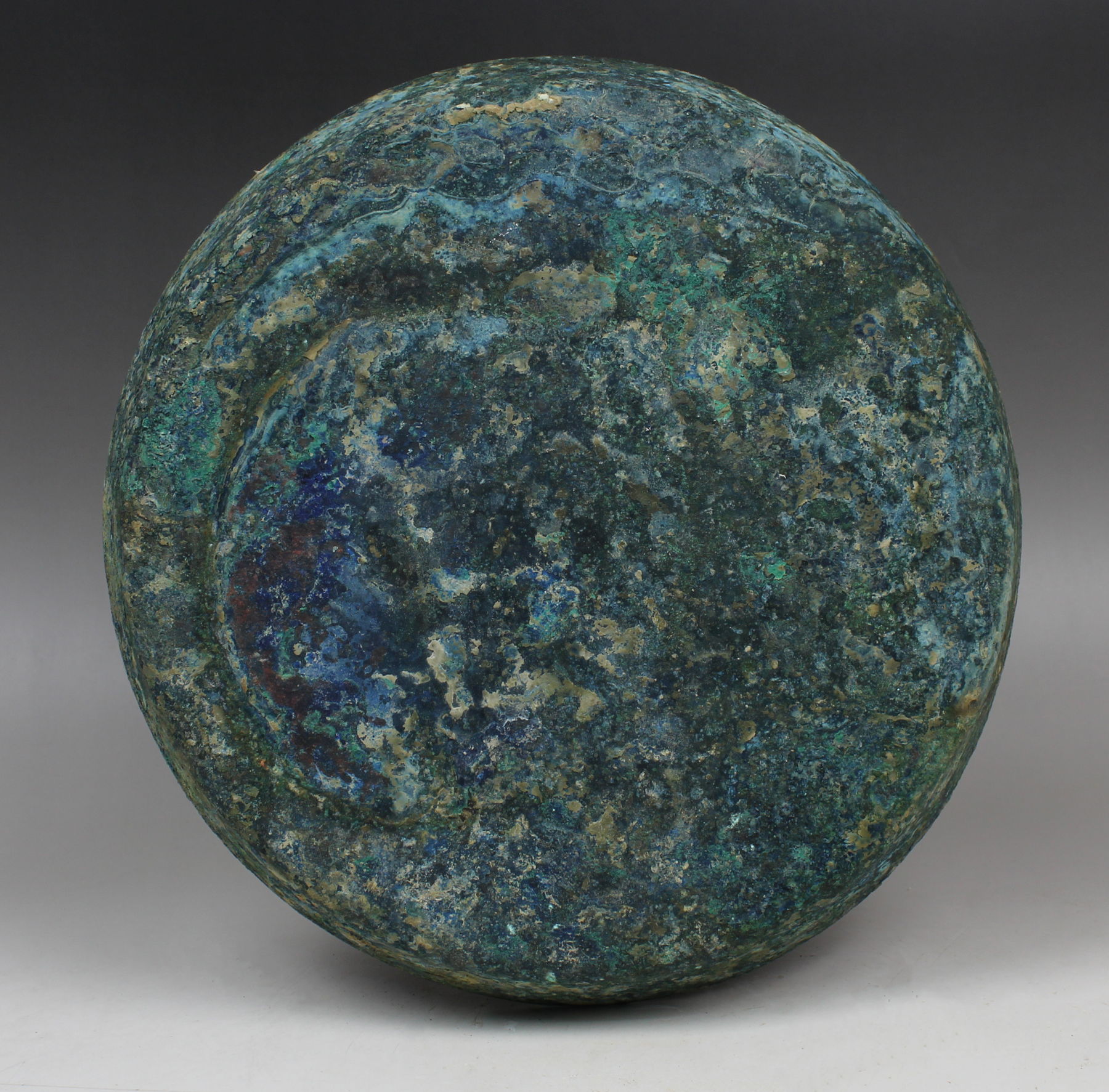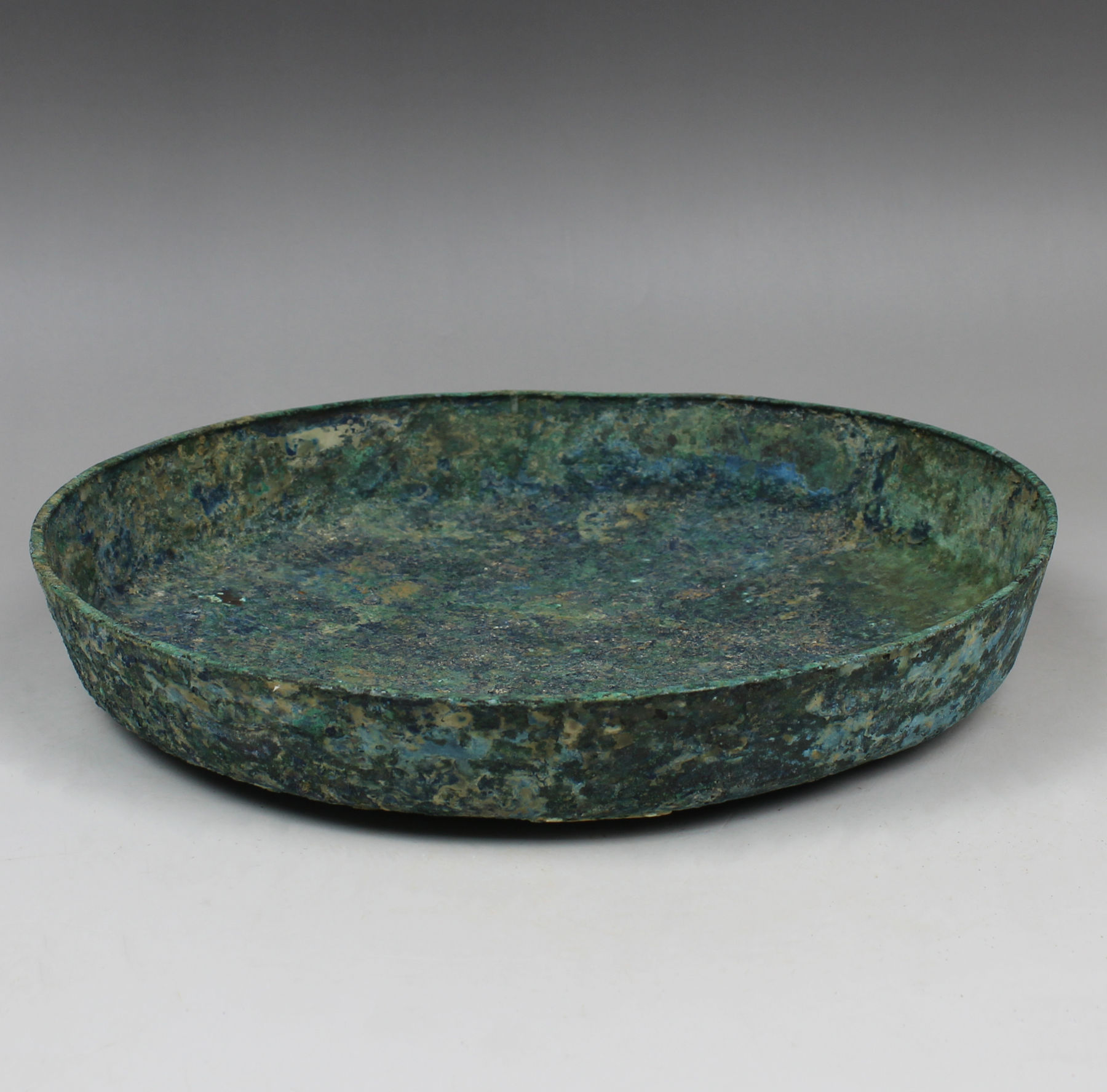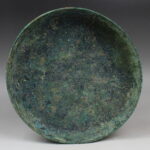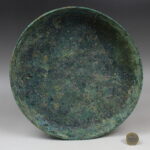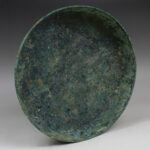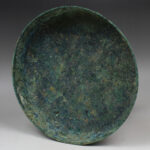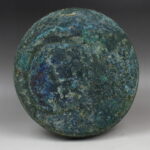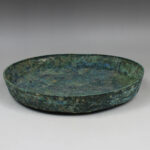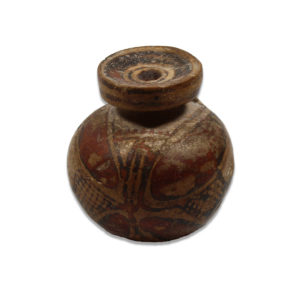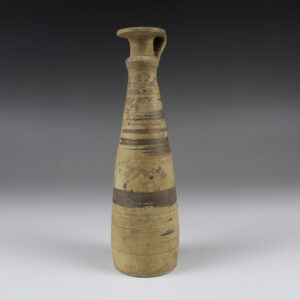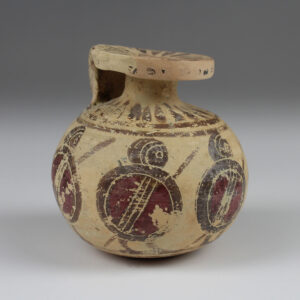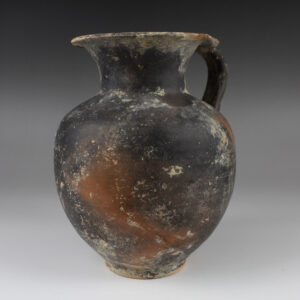Description
| ITEM | Plate |
| MATERIAL | Bronze |
| CULTURE | Etruscan |
| PERIOD | 6th – 5th Century B.C |
| DIMENSIONS | 32 mm x 252 mm diameter |
| CONDITION | Good condition |
| PROVENANCE | Ex Emeritus collection (USA), collected from the 1950’s to the 1980’s by a distinguished university professor who served as Department head, Dean and Vice President of a major university. |
During the Etruscan period, which spanned from the 8th to the 3rd century BCE in ancient Italy, bronze vessels played a significant role in both utilitarian and ceremonial contexts. The Etruscans were known for their expertise in metalworking, and bronze, a copper and tin alloy, was a favored material for creating a variety of objects, including vessels. These vessels served practical purposes in daily life, such as storage, transportation, and cooking. Bronze’s durability and malleability made it an ideal material for crafting containers of various shapes and sizes.
Etruscan bronze vessels were not merely functional; they were also highly ornate and often adorned with intricate engravings and relief decorations. These intricate designs showcased the artistic skill of Etruscan craftsmen and reflected the cultural and religious beliefs of the time. Scenes depicting mythology, religious rituals, and symbolic motifs were commonly featured on the surfaces of these vessels, providing a visual narrative that offered insights into Etruscan cosmology and societal values.
Bronze vessels in the Etruscan period also played a crucial role in burial practices. Elaborate funerary rituals were conducted, and the deceased were often interred with a variety of personal possessions, including bronze vessels. Tomb offerings of bronze items symbolized the Etruscans’ beliefs in an afterlife and their desire to ensure a comfortable and prestigious existence for the deceased.


